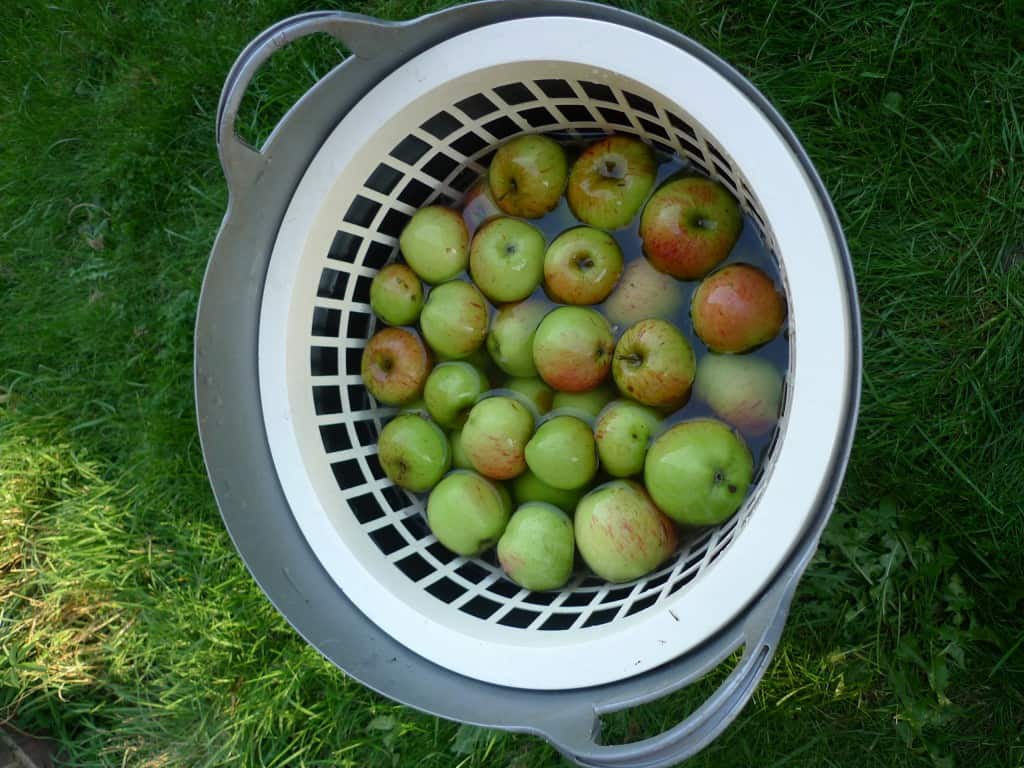
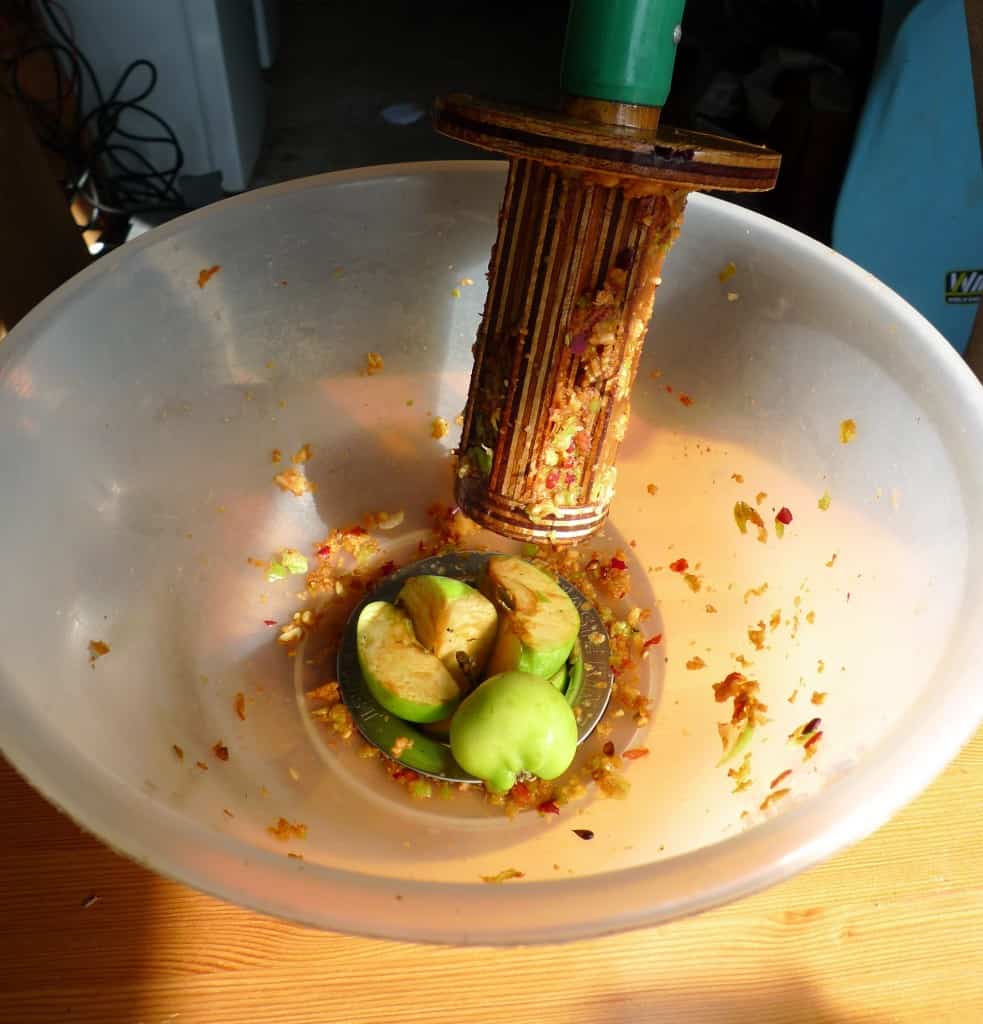
This weekend, an hour before the snow arrived, I’d brought in a good supply of logs for the fire – I fancied a warming glass of mulled apple juice. My stash of Chiltern apple juice in the cupboard under the stairs would be just the ticket. I glugged the contents of the bottle into a pan, added my chosen spices along with a nip of calvados, warmed it all up slowly and sat down next to the fire, glass in hand, while the snow flakes danced.
I’d been invited to join in a communal apple pressing party at some friends Karen and John along with other local apple juice lovers . The Venue: A back garden in Wendover, in the heart of the Chilterns. Apple pressing is most definitely a communal activity with several stages to get stuck into before the actual pressing begins. Sorting and combining different varieties to get the right balance of flavour. Then there’s the washing, the chopping and the pulping. When we arrived the back yard was awash with plastic bags, boxes and crates crammed with apples of all sizes and varities – many left there by locals with more apples in their gardens than they could use. Friends and neighbours, happy in the knowledge that they’ll be able to turn up a day or so later to collect a bottle or three of lovingly pressed apple juice.
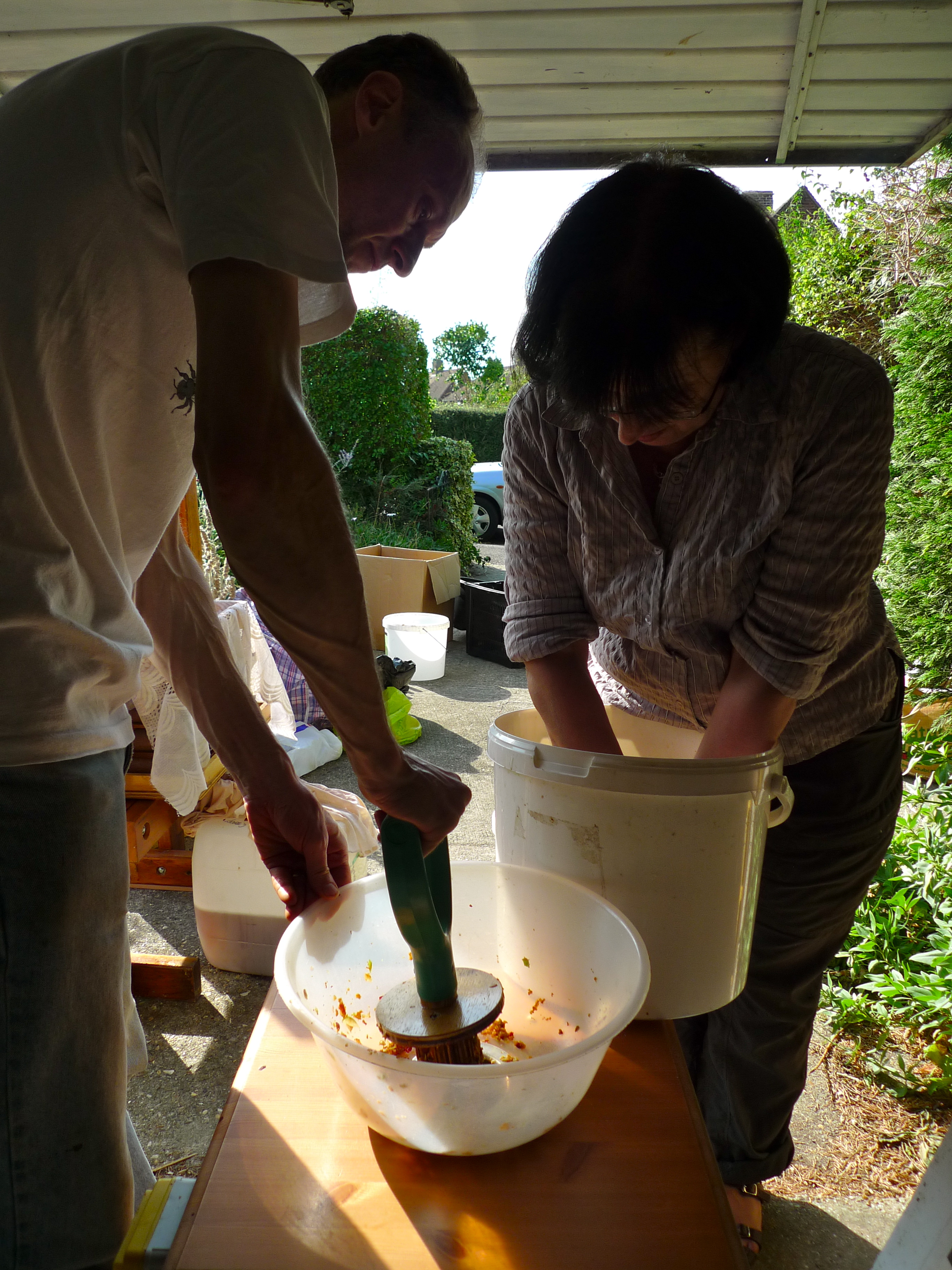

Not only do Karen and John provide their local community with a first rate apple pressing service, using local apples brought along by neighbours and friends but they also grow fruit and vegetables in their well stocked garden, keep a small herd goats on 5 acres of land at the top of the hill. Then there’s the bees housed in another garden close to fruit trees with their spring blossom. Karen and John sell the honey at their local farmer’s market. On top of working full time – Karen is president and John the Membership Secretary of the Mid Bucks Beekeepers Association which offers beginners courses in beekeeping alongside a full programme of yearly events and educational activities.
Best of all, I love the fact that John and Karen have been clever and resourceful building their own apple press using recyled materials. Cannabising an old bedside table in which sits houses an old waste disposal unit, with a plastic bowl above it as a hopper for the apples to fall down inside the unit and get pulped. The wooden plunger is made out of plywood with plastic green fork handle for easy use. The pourous material lining the wooden trays which contain the apples – is simply net curtains picked up at a car boot sale. Why net curtains and not muslin? Karen explained that muslin absorbs too much liquid whereas the net curtains are nylon so don’t absorb liquid – making them perfect for the job. I’m impressed by this sheer inventiveness of it all. The uprights of the press itself are made using solid beams of wood once part of a wooden climbing frame you would find in an old style school gym. Even the dried, spent apple pulp (rather beautful with its flecks of green and red) is recycled! – it’s bagged up and fed to the goats who apparently love it. Well…. goats will eat everything and anything!!
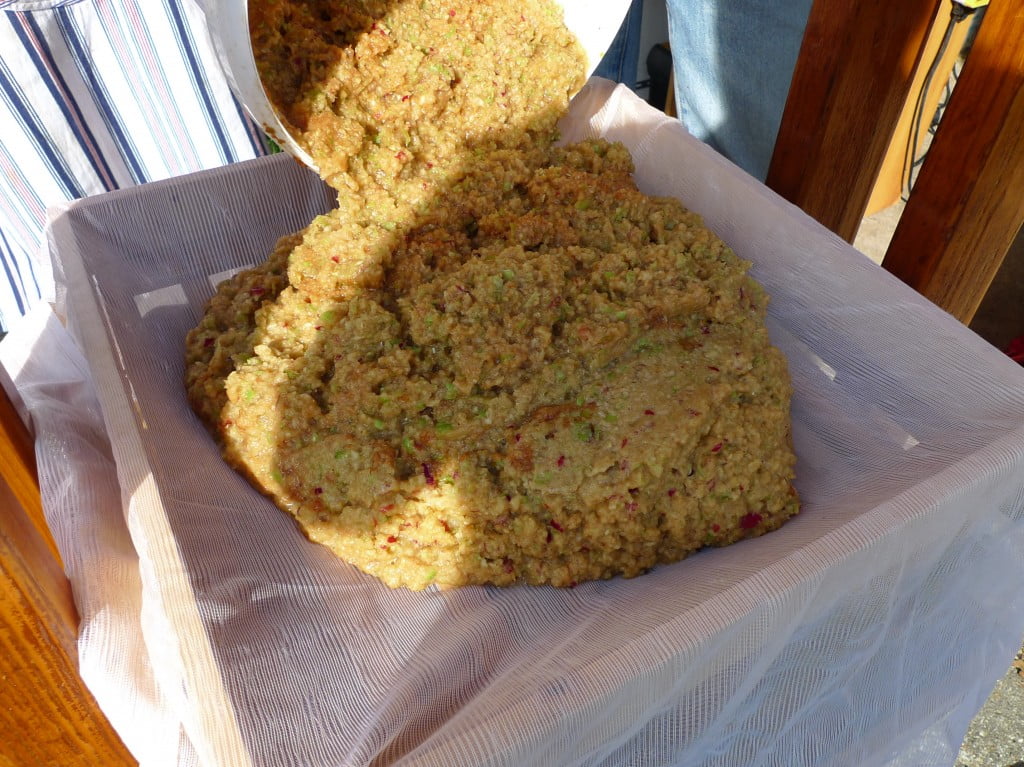
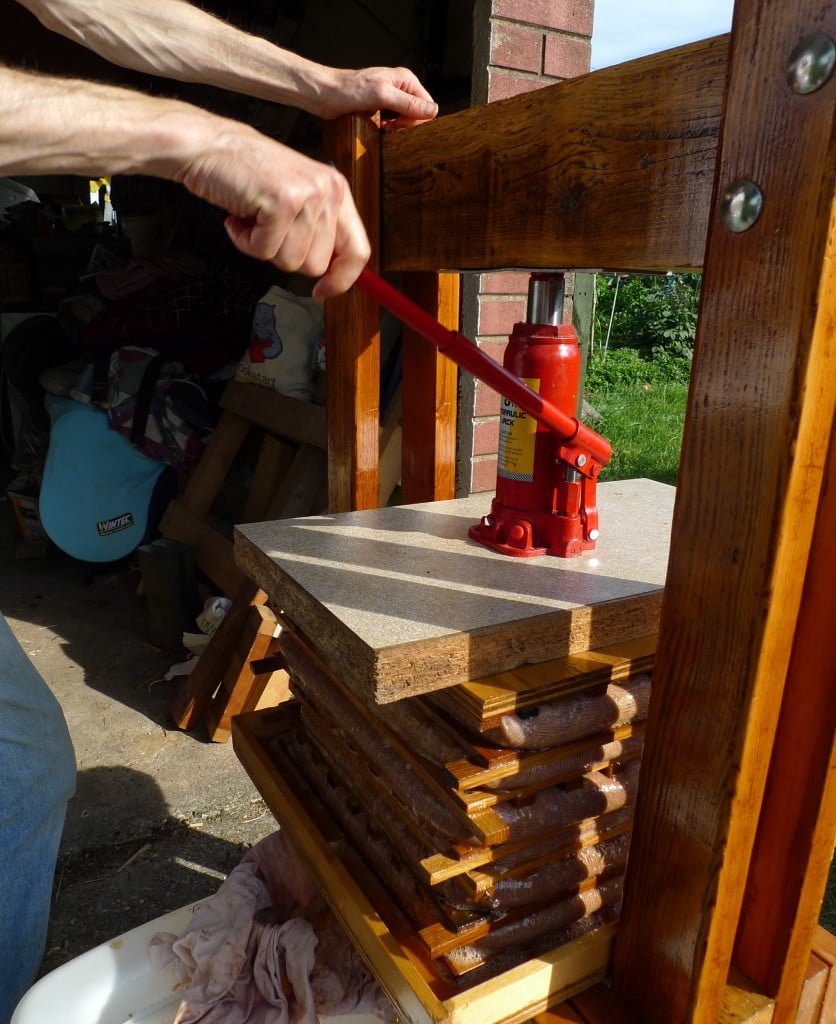
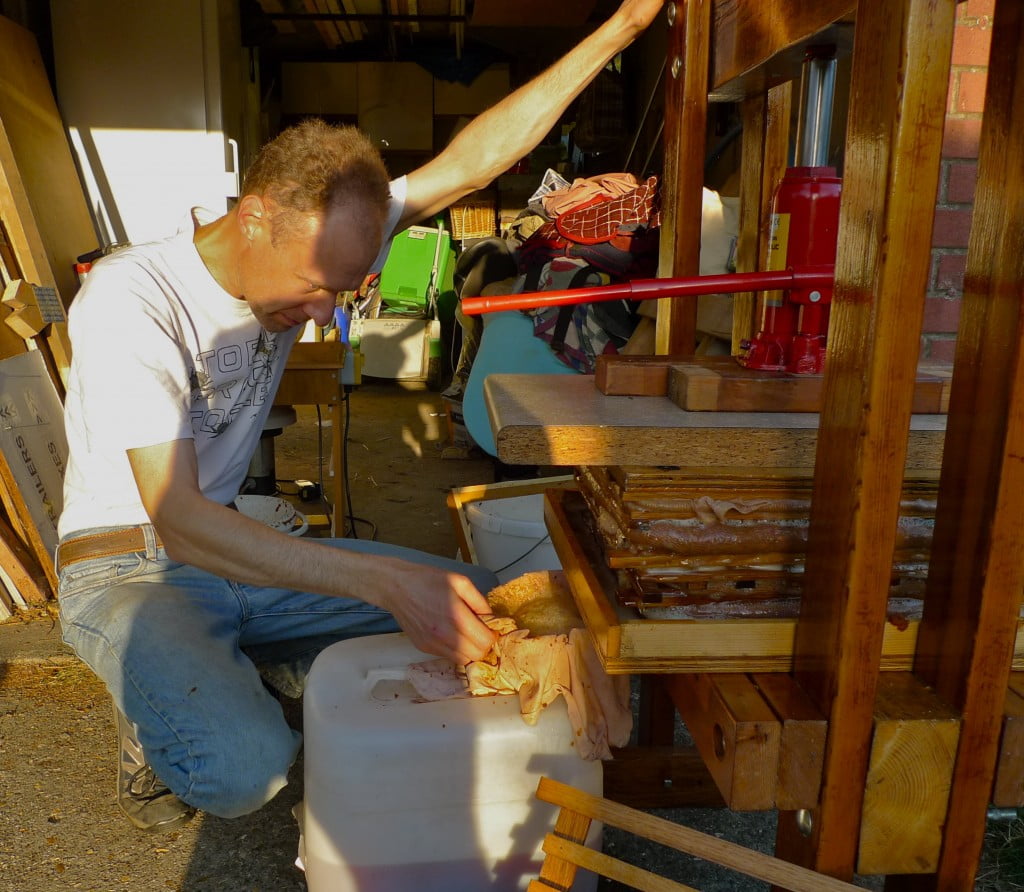
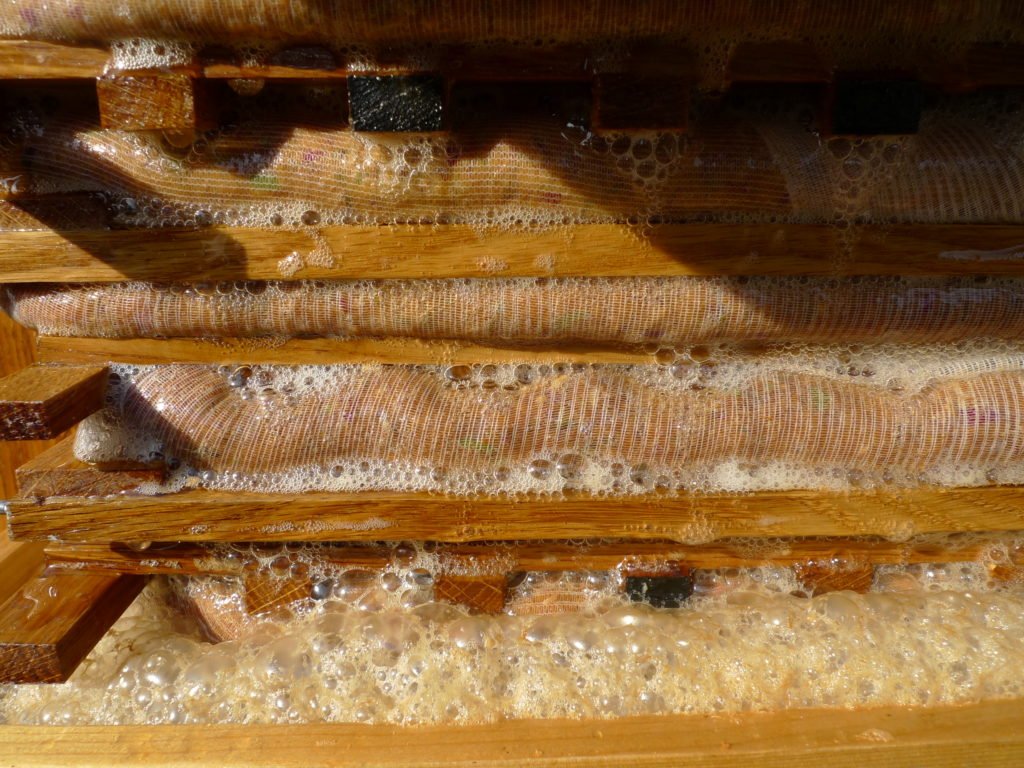
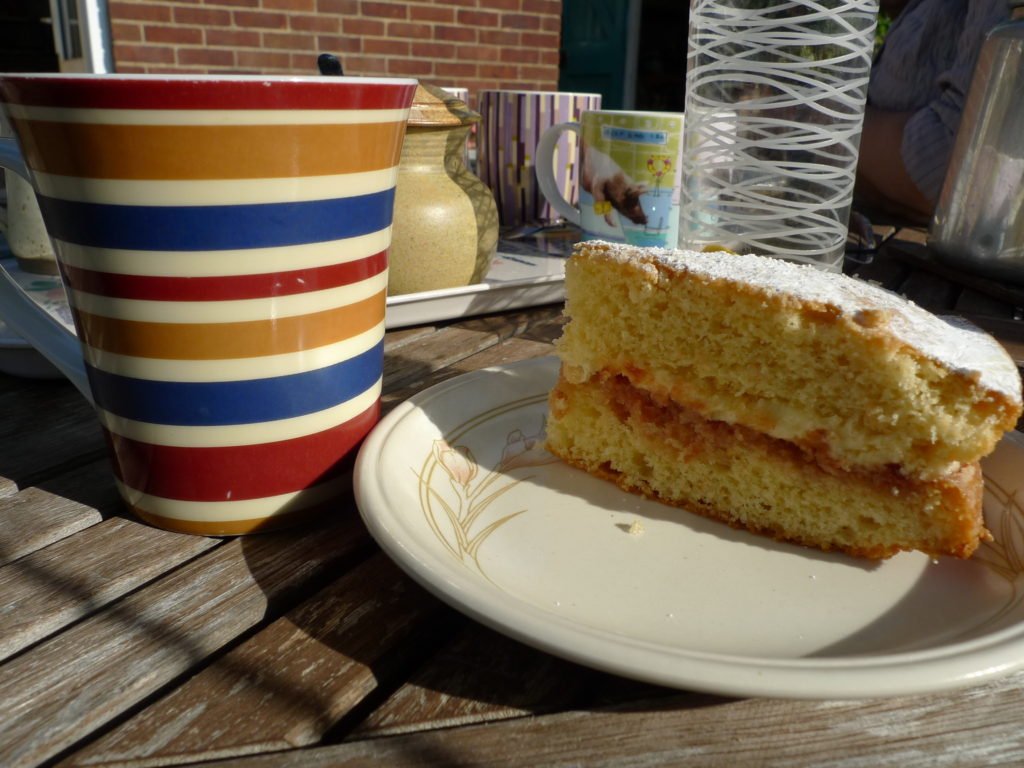

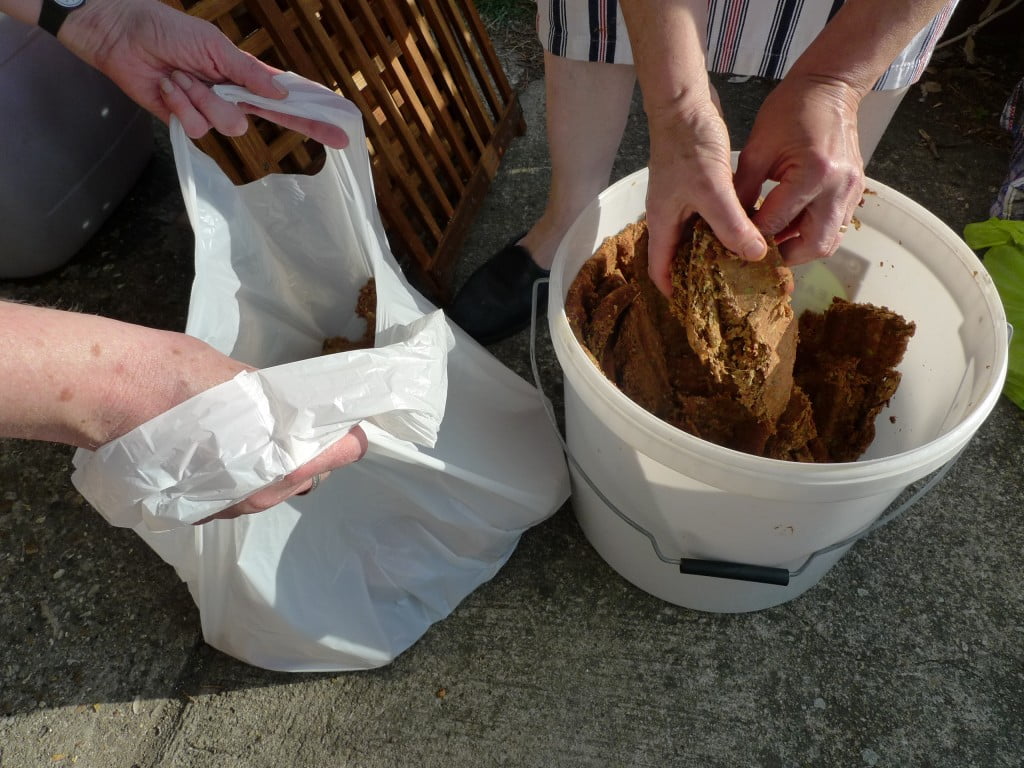
Once all the apples for the day had been pressed, we moved on to the bottling and pasteurising stage. John had adapted a large boiling unit which he picked up at Lidl to pasteurise the apple juice. This stage is necessary if you are not going to freeze your juice. We decanted the juice into glass bottles and brought the temperature of the water up to 72 degrees centigrade for approx 20 mins. You can replicate this process using a large stock pot or jam preserving pan, placing a round, metal cake stand on the bottom of the pan so that the water can circulate freely underneath the bottles and stops the bottles rattling or even cracking. I do this when I’m bottling my damson ketchup which needs to be pasteurised after bottling.
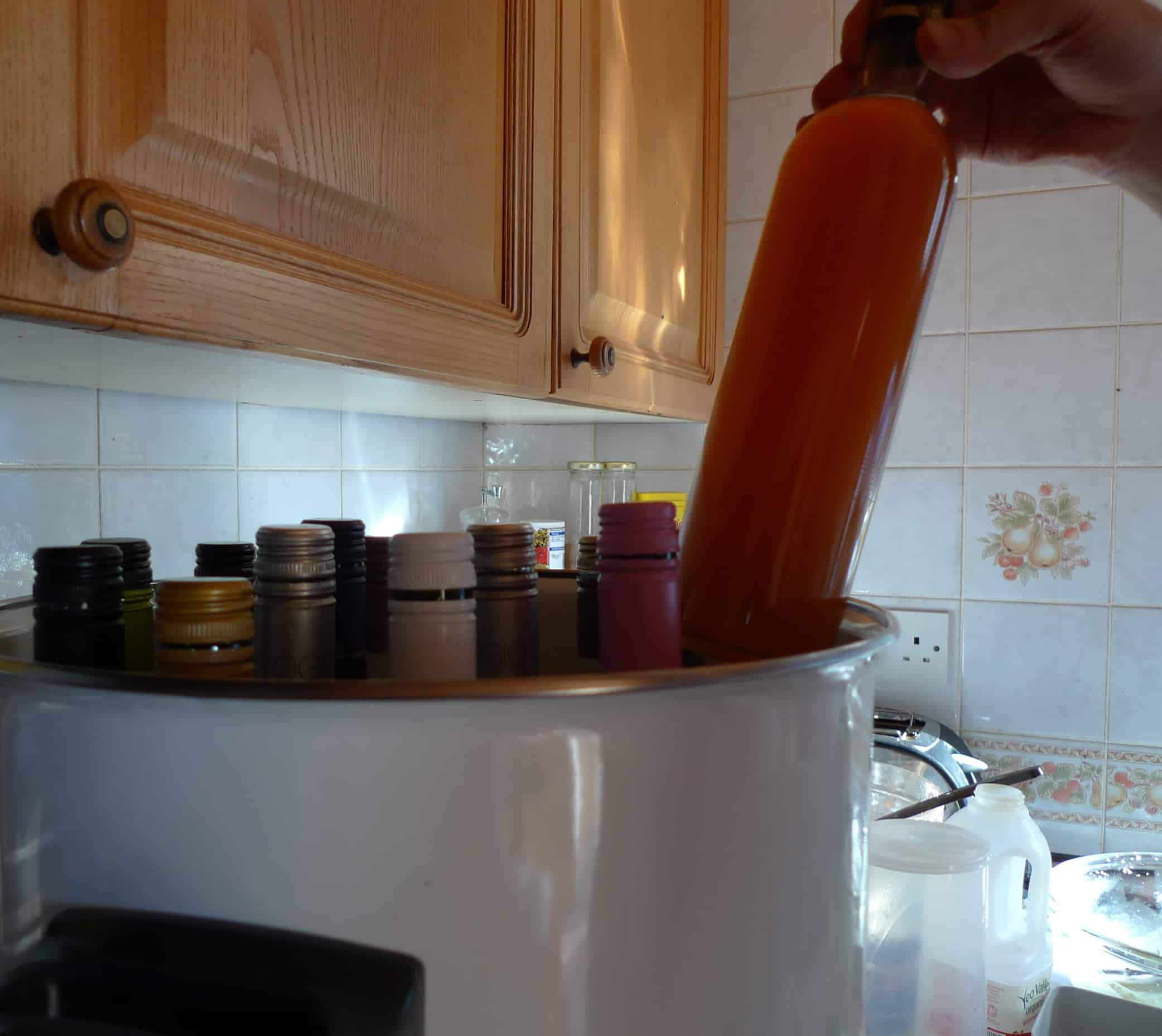
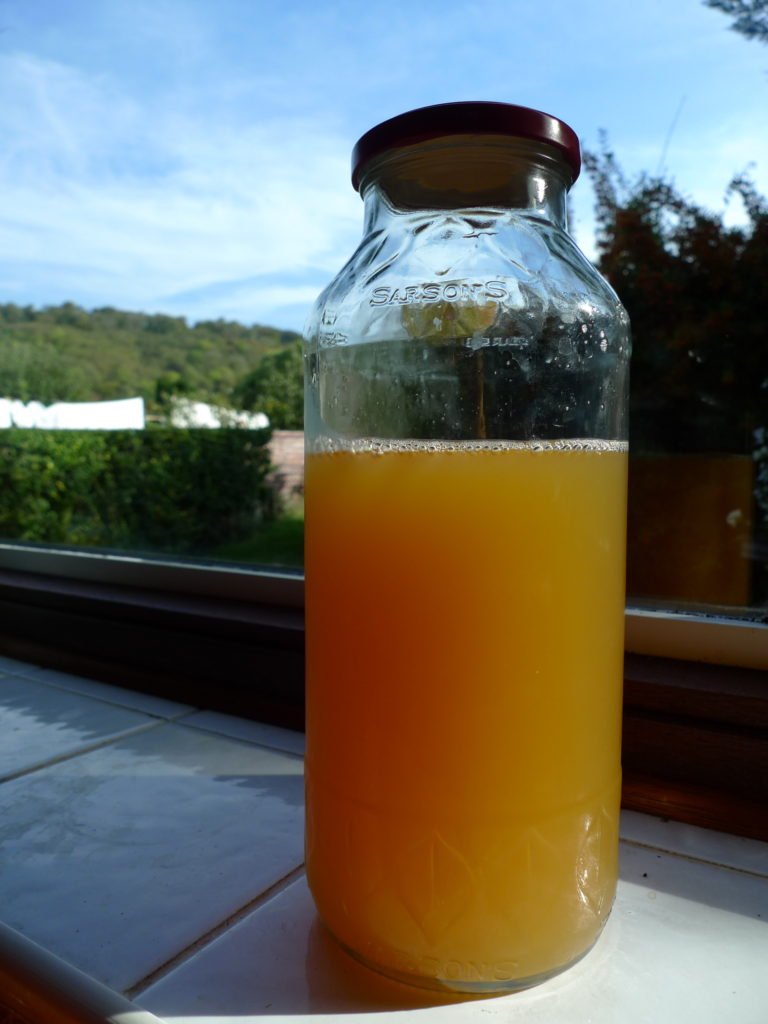
We worked hard all afternoon, enjoying the convivial company and the crack. By the end of the day we’d pressed well over 100 litres of apple juice!! It was great fun meeting and working with new people – processing kilos of apples and transforming them into fantastic tasting amber apple juice. I returned to London that evening, shattered but happy – with my four large bottles of apple juice and the idea of joining in with another apple pressing afternoon the following year.
Here’s the recipe I used for my mulled apple juice.
1 Litre of apple juice
whole cloves (8 or more)
whole allspice (6or so)
2 star anise
2 sticks of cinammon
pieces of peel of one orange (no pith)
shot glass of calvados (omit if you prefer a non-acoholic version)
John recommends vigopresses.co.uk for lots of useful information on pressing, crushing apples, fruit as well as cider making. Some great recipes too.
Anybody who fancies making their own press or cider making should visit the UK Cider pages at https://cideruk.com/ where there is loads of useful info.

